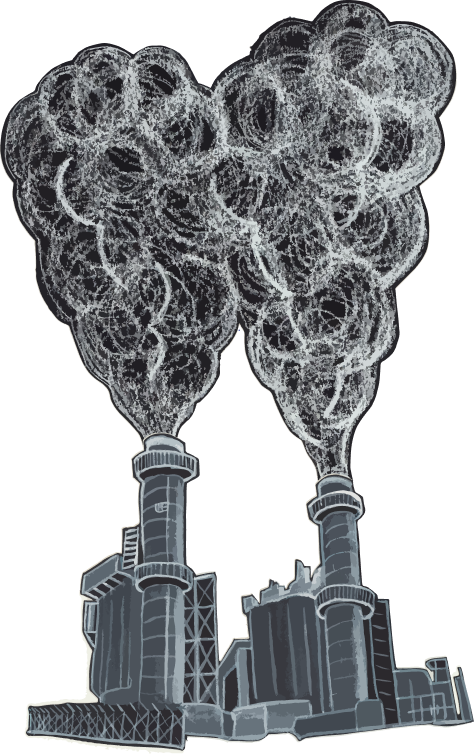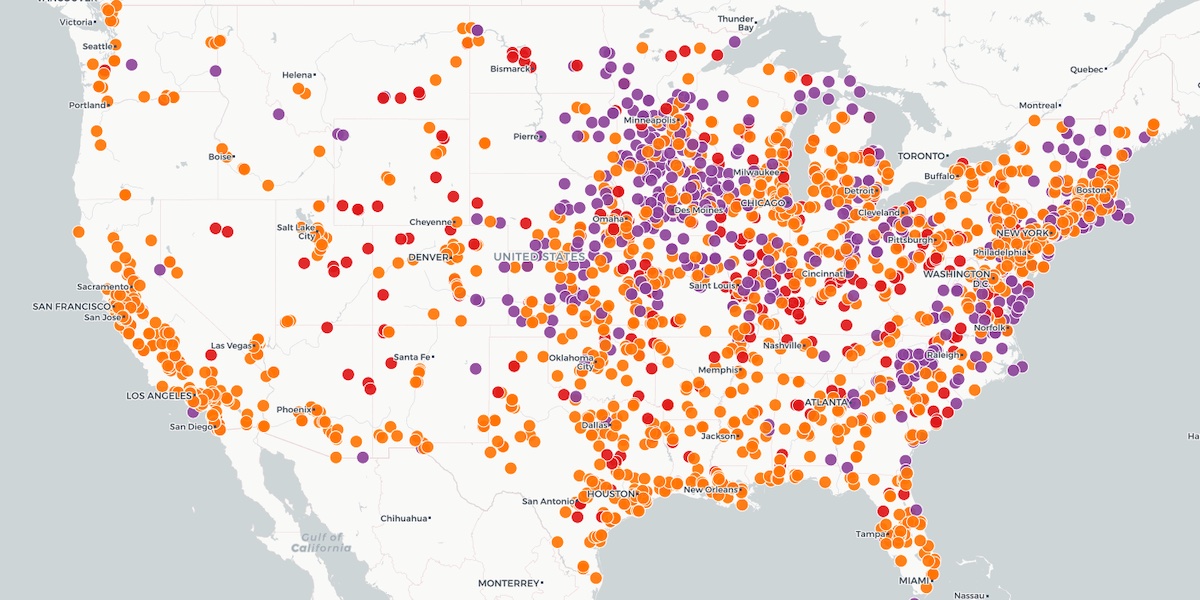Colorado
Back to mapTo get to zero by 2050, Colorado must cut emissions by 3.7% a year
Emissions in Colorado
Million metric tons of carbon dioxide (CO2) [?] equivalent (MTCO2e [?]) emissions
Note: Grey area indicates missing data due to processing delays.
Source: WRI, Mar 2021
This is how we're going to do it
- Boilers and furnaces with heat pumps [?]
- Gas stoves with electric induction stoves [?]
- No-till farming to keep CO2 in the soil
- Capturing methane leaks from landfills
- Capturing CO2 to make emissions-free concrete
- Burning green hydrogen to make emissions-free steel
- Plugging methane leaks from gas pipelines
Decarbonize Our Buildings
10% of Colorado's climate pollution comes from buildings.
We burn fossil fuels to heat our air, water, and food.
To cut this pollution...
Let's electrify our heat!
We'll replace...
...in all of Colorado's 2.2 million buildings.
In fact, 28% of appliances in buildings in Colorado are already fossil fuel free!
That means we only need to electrify the remaining 1.6 million dirty buildings in Colorado. That's around 58,000 per year.
Source: Microsoft, Mar 2021; NREL, Dec 2021Electrifying all buildings cuts 10% of the pollution.
Decarbonize Our Transport
24% of Colorado's pollution comes from cars, trucks, trains, and planes.
But mostly from cars.
To cut this pollution,
your next car must be electric.
Or consider going car-free with public transit, bikes/e-bikes, car share, or other alternatives!
There are 1.6 million vehicles in Colorado and 25,000 are already electric (1.5% of the total).
We need to electrify (or replace) the remaining 1.6 million gas-powered vehicles. That's around 60,000 a year.
Source: DOT, Feb 2021Electrifying all transportation cuts 24% of the pollution.
Decarbonize Our Power
27% of Colorado's pollution comes from burning coal, gas, and oil to make power.

To cut this pollution...
Put solar panels on your roof!
Then, we'll replace all fossil fuel power plants with solar and wind farms.

...and find good jobs for those workers.
Current Fossil Fuel Power Plants in Colorado
9 coal plants
Comanche (470)
Pueblo County
1,635 MW
Craig
Moffat County
1,428 MW
Rawhide Energy Station
Larimer County
800 MW
Pawnee
Morgan County
552 MW
Hayden
Routt County
465 MW
Ray D Nixon
El Paso County
283 MW
Martin Drake
El Paso County
257 MW
Nucla
Montrose County
114 MW
Western Sugar Coop- Ft Morgan
Morgan County
3 MW
26 gas plants
Cherokee
Adams County
1,427 MW
Fort St. Vrain
Weld County
1,149 MW
Rocky Mountain Energy Center
Weld County
685 MW
Front Range Power Plant
El Paso County
554 MW
6 oil plants
Burlington (CO)
Kit Carson County
129 MW
Pueblo
Pueblo County
31 MW
La Junta
Otero County
19 MW
Rocky Ford
Otero County
12 MW
Airport Industrial
Pueblo County
10 MW
Holly
Prowers County
6 MW
But wait!
It's not enough to replace our power plants with wind and solar farms.
To power our electric cars and buildings, we need two times the electricity we have today.
In all, we'll need to build 7,000 megawatt (MW) [?] of wind power and 6,000 MW of solar power.
Since the average wind turbine provides 2.75 MW of peak capacity, Colorado would need to install about 2,000 turbines.
Since Colorado already has 2,000 MW of wind and 318 MW of solar, that's 5,000 MW of wind power we need to build and 6,000 MW of solar power. That's around 186 MW of wind power and 214 MW of solar power a year.
Source: EIA, Apr 2022Decarbonizing all dirty power cuts 27% of the pollution.
And gives us zero-emissions power we need to eliminate pollution from buildings and cars!
Other Emissions
The last 39% of Colorado's climate pollution comes from other sources...
This includes farming, landfills, industry, and leaks from gas pipelines.
There's no one solution to solve these problems, but there are lots of great ideas:
That doesn't mean there's no solution, it just means that clean electrification [?] doesn't help with these problems, and you could fill a whole book with covering all of them. We need to encourage our politicians to invest in researching new solutions and implementing existing solutions to these problems!
Ready to do your part?
Learn how to electrify your own machines and pass local policy to electrify the rest
Take Action